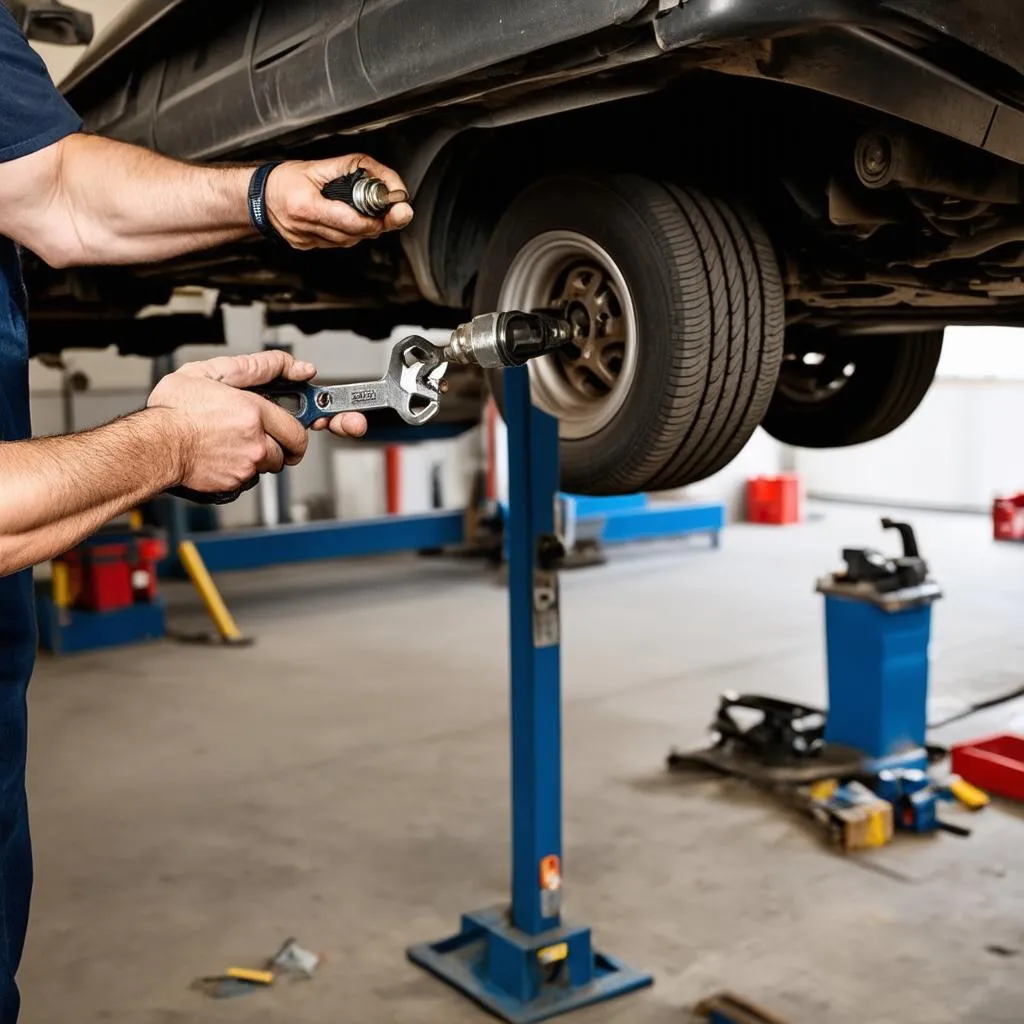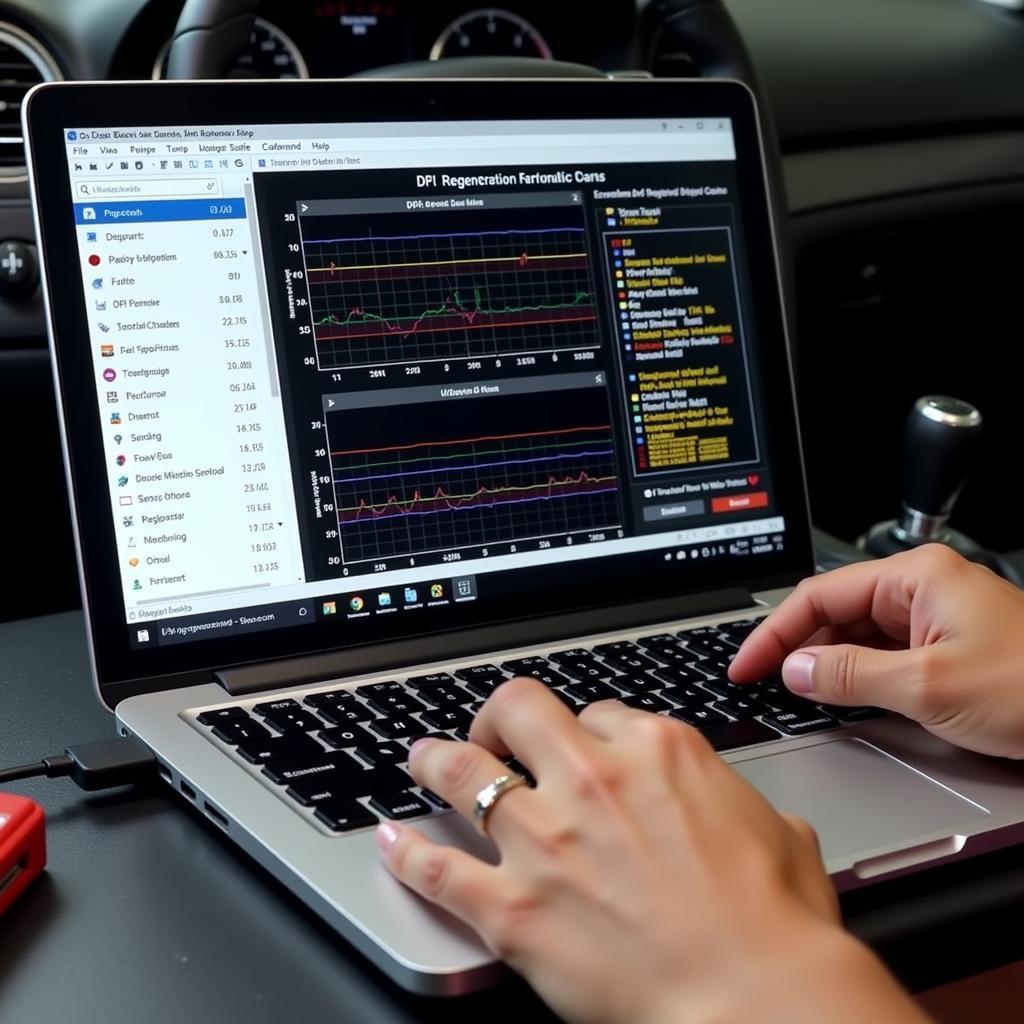Performing a VW T5 DPF regeneration with VCDS is a common procedure for owners and technicians alike. This guide will delve into the intricacies of DPF regeneration, focusing on the use of VCDS diagnostic software for the Volkswagen T5. We’ll cover everything from understanding the DPF system to troubleshooting common issues.
Understanding the DPF System in Your VW T5
The Diesel Particulate Filter (DPF) in your VW T5 is designed to trap soot and other harmful particles emitted by the diesel engine. Over time, the DPF becomes clogged, requiring a regeneration process to burn off the accumulated soot. This process can occur passively during highway driving or actively through a forced regeneration initiated by the engine control unit (ECU) or using diagnostic software like VCDS. A clogged DPF can lead to reduced engine performance, increased fuel consumption, and even costly repairs. Understanding this system is crucial for maintaining the health and longevity of your vehicle.
Understanding the different types of regeneration is important. Passive regeneration happens automatically during high-speed driving, while active regeneration is triggered by the ECU when certain conditions are met. Forced regeneration, using VCDS, allows you to initiate the process manually, providing greater control over the procedure.
Performing a DPF Regeneration with VCDS on a VW T5
Using VCDS for a forced DPF regeneration provides several advantages, including the ability to perform the regeneration at a convenient time and location. Here’s a step-by-step guide:
- Connect VCDS: Plug the VCDS interface into your VW T5’s OBD-II port.
- Start VCDS: Launch the VCDS software on your computer.
- Select Control Module: Select “Select Control Module.”
- Choose Engine: Choose “Engine” from the list of control modules.
- Basic Settings: Go to “Basic Settings.”
- Select Regeneration: Select the option for DPF regeneration.
- Follow Prompts: Follow the on-screen prompts in VCDS to initiate and monitor the regeneration process. Ensure the engine is at operating temperature and the vehicle is parked in a safe, well-ventilated area.
Common Problems and Troubleshooting
Sometimes, the DPF regeneration process might not complete successfully. Here are some common issues and how to troubleshoot them:
- Interrupted Regeneration: Ensure the regeneration process is not interrupted. Maintain the required engine speed and temperature throughout the process.
- Fault Codes: Check for any fault codes related to the DPF system using VCDS and address them accordingly.
- Sensor Issues: Faulty sensors, such as the differential pressure sensor, can prevent regeneration. Diagnose and replace faulty sensors.
- DPF Ash Load: If the DPF is excessively loaded with ash, a forced regeneration might not be effective. In this case, the DPF might require professional cleaning or replacement.
When to Seek Professional Help
While VCDS allows for DIY DPF regeneration, some situations require professional intervention:
- Recurring DPF Issues: If you frequently experience DPF problems, consult a qualified technician to diagnose the underlying cause.
- Complex Fault Codes: If you encounter complex fault codes that you can’t interpret or resolve, seek professional assistance.
- Physical Damage: If the DPF is physically damaged, it requires professional repair or replacement.
“Regular DPF maintenance, including timely regenerations, is essential for optimal engine performance and longevity,” advises John Miller, a senior automotive diagnostic technician with over 20 years of experience. He adds, “VCDS is a powerful tool for managing DPF regeneration, but understanding the process and potential issues is crucial.”
Conclusion
Performing a VW T5 DPF regeneration with VCDS is a valuable skill for any owner or technician. By understanding the DPF system, following the correct procedure, and troubleshooting common issues, you can maintain the health of your vehicle and avoid costly repairs. Regular DPF regeneration using VCDS contributes significantly to the long-term performance and reliability of your VW T5.
FAQ
- How often should I perform a DPF regeneration? It depends on driving conditions, but typically every 300-500 miles.
- Can I drive during a forced regeneration? No, it’s best to park the vehicle in a safe location.
- What if the regeneration fails? Check for fault codes and address any underlying issues.
- Is VCDS necessary for DPF regeneration? While not strictly necessary, it offers greater control and diagnostics.
- How much does a DPF replacement cost? It can vary, but typically ranges from $1,000 to $3,000.
- Can I clean the DPF myself? While some cleaning solutions exist, professional cleaning is often more effective.
- What are the symptoms of a clogged DPF? Reduced engine performance, increased fuel consumption, and warning lights.
Need help? Contact us via WhatsApp: +1 (641) 206-8880, Email: CARDIAGTECH[email protected] or visit us at 276 Reock St, City of Orange, NJ 07050, United States. We have a 24/7 customer support team ready to assist you.


